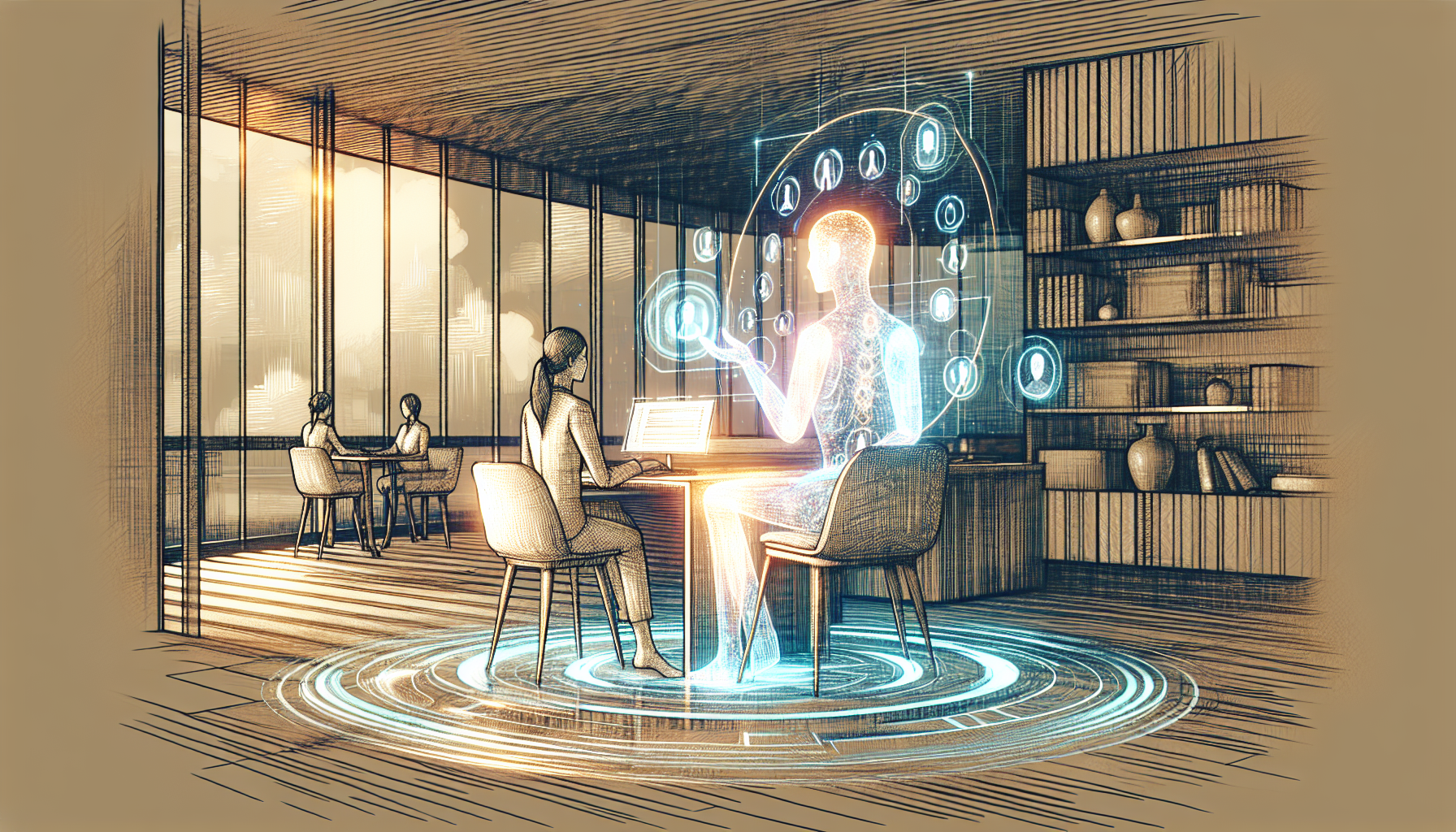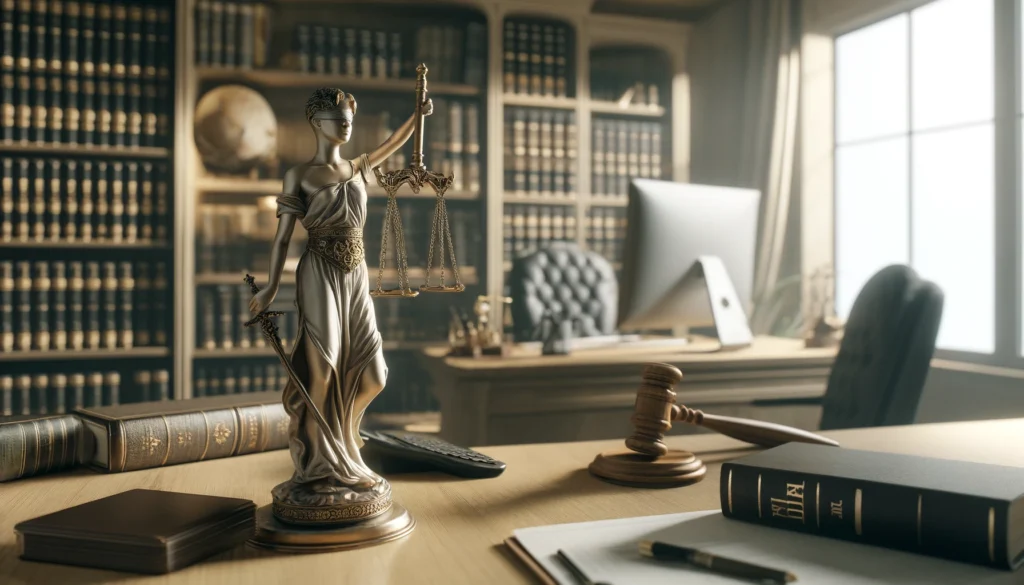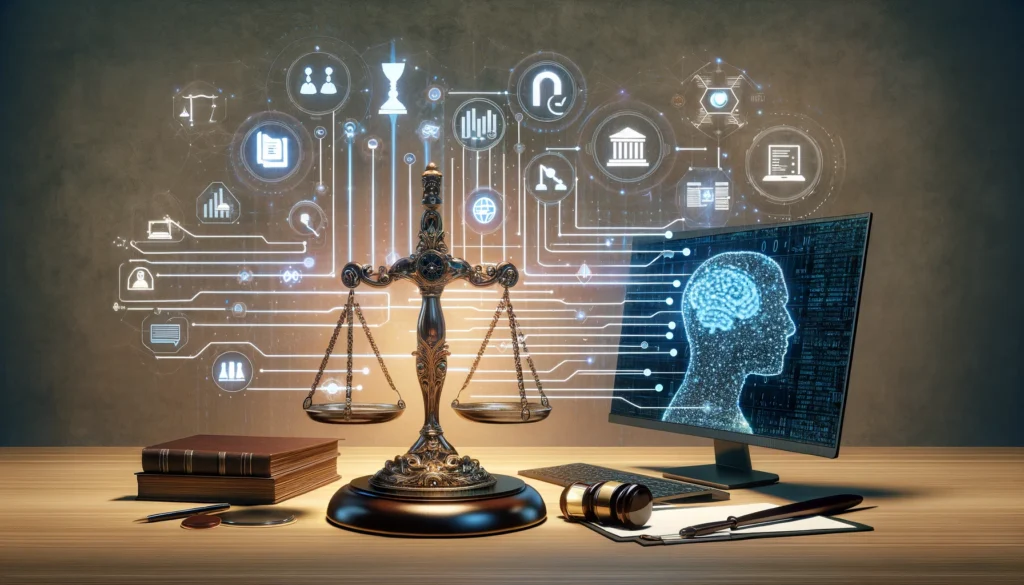
Opening the Briefcase: Setting the Stage
In today’s fast-paced corporate environment, the demand for efficiency in legal work is higher than ever. Legal professionals are continually seeking tools that can streamline processes without compromising on quality. Efficiency in corporate legal work not only saves time but also enhances productivity, allowing legal teams to focus on more complex, high-stakes tasks.
This is where ChatGPT, an advanced language model, steps into the frame. ChatGPT has the potential to revolutionize how legal professionals draft, review, and manage corporate legal opinions, offering an unprecedented level of support and automation. Let’s delve into the capabilities and practical applications of ChatGPT in the realm of corporate law.
The Digital Associate: Understanding ChatGPT’s Legal Capabilities
ChatGPT is an AI model developed by OpenAI that leverages natural language processing to understand and generate human-like text. In the context of legal applications, ChatGPT can assist in various facets, from drafting documents to providing preliminary analyses.
This digital assistant can help draft corporate legal opinions by:
- Generating initial drafts based on specific legal questions or issues.
- Summarizing case law and statutes relevant to the opinion.
- Providing alternative arguments and viewpoints that may not be immediately apparent.
- Reviewing and editing drafts for clarity and coherence.
By leveraging ChatGPT, legal professionals can streamline the drafting process and ensure thorough, well-rounded legal opinions. Next, we’ll explore how to effectively craft prompts to maximize ChatGPT’s output.
Preparing the Framework: Actionable Prompt Crafting Strategies
To harness the full potential of ChatGPT, it’s crucial to craft effective and targeted prompts. An actionable prompt will guide the AI in generating precise and relevant content, tailored to the requirements of your legal task.
Here are some strategies for creating such prompts:
- Be Specific: Clearly state the legal issue or question. For example, “Draft an opinion on the Liabilities of Directors under the new XYZ statute.”
- Use Context: Provide background information or context to guide the AI. For example, “Summarize the key points from the recent Supreme Court ruling on intellectual property. Focus on how it impacts tech companies.”
- Ask for Structure: Encourage organized output by requesting structured drafts. For example, “Create an outline for a corporate legal opinion on mergers and acquisitions.”
Examples of prompts for various legal tasks include:
- “Draft a non-disclosure agreement for a tech startup negotiation.”
- “Summarize the due diligence process for acquiring a private company.”
- “Provide a list of potential legal risks in a joint venture agreement.”
To refine prompts for maximum output quality:
- Iterate: Test different phrasings to identify what works best.
- Provide Feedback: Use initial outputs to refine and clarify future prompts.
- Include Specifics: Tailor prompts with exact details to ensure relevance.
With well-crafted prompts, ChatGPT can generate impressive outputs, enhancing the efficiency and accuracy of your legal drafting process. Let’s explore how to integrate ChatGPT into your workflow seamlessly.
Optimizing Workflows: Integrating ChatGPT Seamlessly
To truly benefit from ChatGPT, it is essential to integrate it smoothly into your existing workflows. Here are some best practices for effective integration:
- Define Clear Use Cases: Identify specific tasks where ChatGPT can add value. Use it for drafting initial documents, conducting legal research, or generating summaries.
- Leverage Software Tools: Pair ChatGPT with software like evernote for collaborative drafting, or integrate it into document management systems like iManage.
- Automate Routine Tasks: Utilize ChatGPT for repetitive tasks such as generating boilerplate language or reviewing large volumes of documents for specific clauses.
- Train Your Team: Ensure your paralegals and legal assistants are adept at using ChatGPT by conducting training sessions and providing resources.
Time-saving techniques specific to paralegal responsibilities include:
- Legal Research: Use ChatGPT to quickly gather information and case law relevant to ongoing matters.
- Document Preparation: Automate the drafting of standard documents, reducing turnaround times.
- Email Drafting: Generate email drafts for client communications and routine follow-ups.
By integrating ChatGPT into your workflow effectively, you can significantly enhance your productivity. However, it’s crucial to ensure the accuracy and quality of the outputs generated by AI.
Accentuating Accuracy: Ensuring High-Quality Legal Outputs
While ChatGPT offers impressive capabilities, maintaining high-quality legal outputs requires a combination of AI and human expertise. Here are strategies to ensure the accuracy of AI-generated content:
- Verify Information: Cross-reference AI-generated content with authoritative legal sources to confirm accuracy.
- Fine-Tune Outputs: Use human oversight to edit and refine drafts, ensuring they’re precise and tailored to your needs.
- Monitor for Common Errors: Be aware of common AI limitations such as outdated information or misinterpretation of legal terminology.
The importance of human oversight cannot be overstated. The final review by a legal professional ensures that the document is accurate, relevant, and free of errors. With these strategies, you can confidently rely on ChatGPT while maintaining high standards of legal workmanship. Let’s explore how to leverage ChatGPT’s more advanced features for complex legal analysis.
Mastering the Advanced Features: Leveraging Nuances in ChatGPT
For more complex legal analyses, ChatGPT’s advanced features can be particularly useful. Utilizing its contextual abilities allows for deeper insights and more nuanced drafts.
Here’s how to master these advanced features:
- Contextual Analysis: By providing comprehensive background information, ChatGPT can perform a more thorough analysis. For instance, “Analyze the impact of recent trade regulation changes on multinational corporations operating in the U.S.”
- Creative Prompts: Enhance legal drafts by using creative and thought-provoking prompts. For example, “Draft a comparative analysis of breach of contract remedies in common law versus civil law jurisdictions.”
- Iterative Feedback: Utilize an iterative process where you refine prompts based on initial outputs, guiding ChatGPT towards more polished and tailored drafts.
Employing these advanced features will help you leverage ChatGPT’s capabilities to their fullest, enabling more sophisticated legal analysis and drafting. As we wrap up, let’s highlight the best practices for ensuring ongoing success with this digital assistant.
Signing Off: Best Practices for Ongoing Success
To maximize the benefits of ChatGPT in your legal practice:
- Stay Updated: Continuously learn and adapt to new features and capabilities of ChatGPT.
- Iterate and Optimize: Regularly refine your prompts and integration methods based on feedback and results.
- Maintain Oversight: Always review and verify AI-generated content to ensure it meets your professional standards.
With these best practices, you can maintain high efficiency and quality in your legal work, leveraging ChatGPT for continuous improvement and success.


